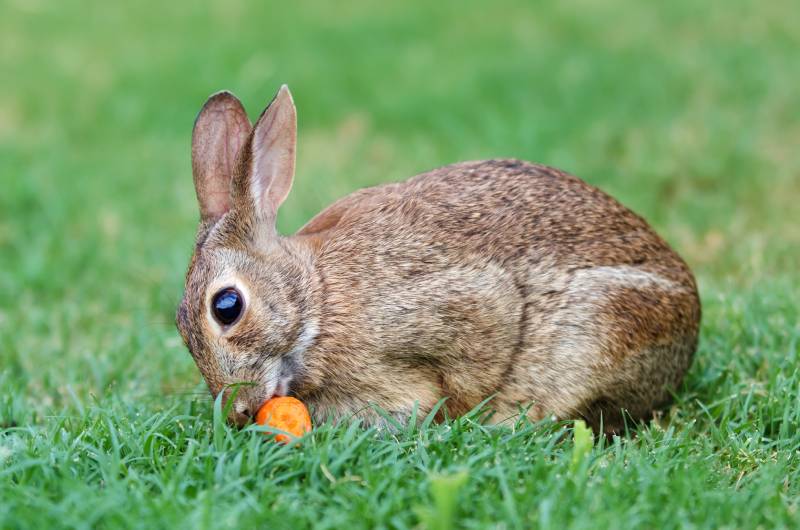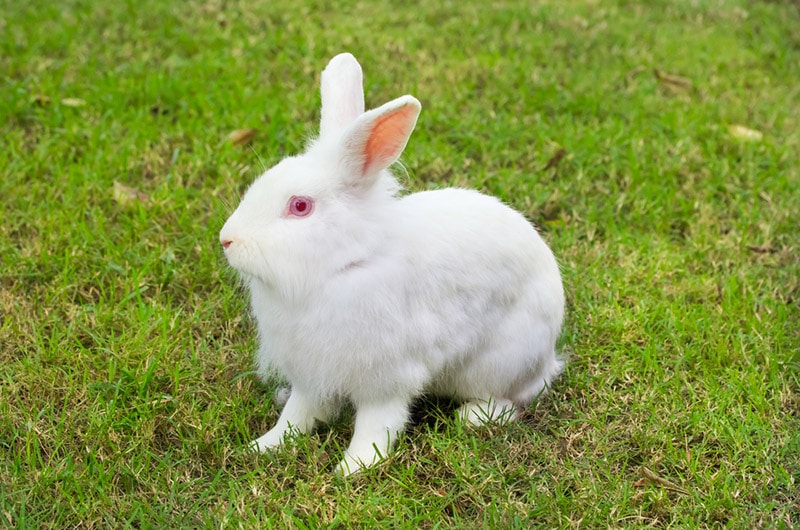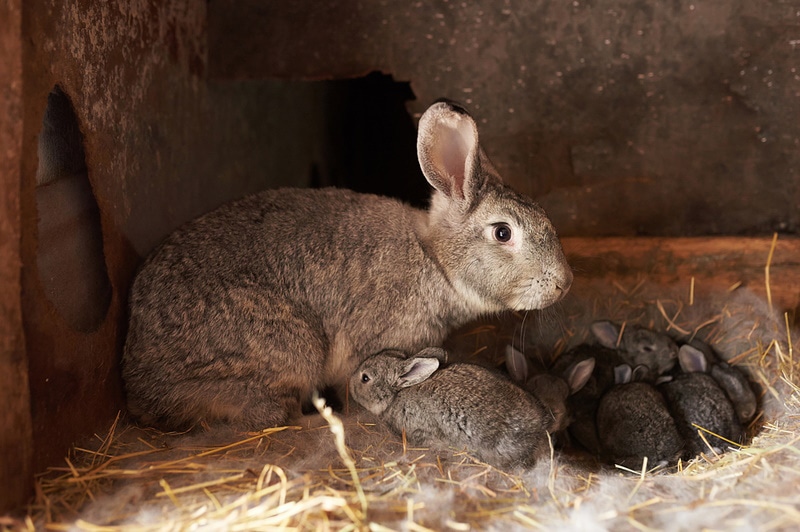11 Largest Rabbit Breeds You Can Keep as a Pet (With Pictures)
By Brooke Bundy
Updated on
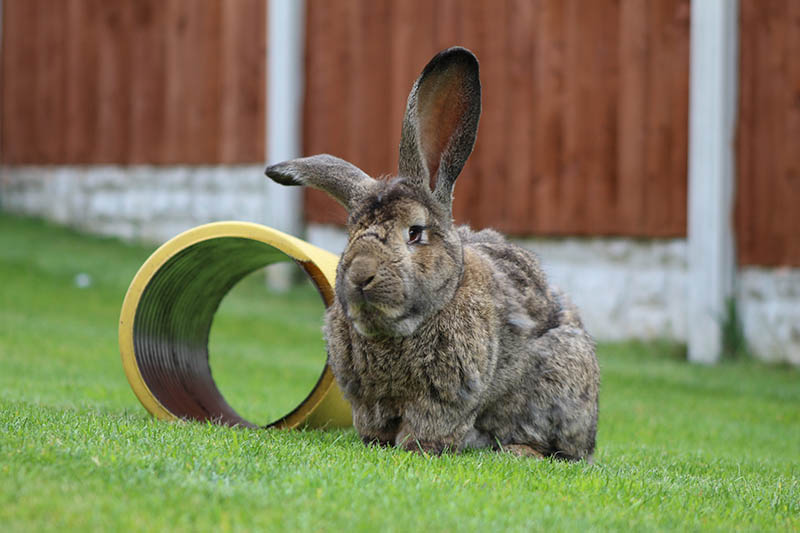
The average size for a rabbit is around 6 pounds. Some, such as the Miniature Holland Lop, may weigh as little as 2 pounds even as an adult. However, large or giant breeds weigh 10 pounds or more. Some breeds, such as the Flemish Giant, may weigh upwards of 20 pounds, which is about the size of a Maine Coon cat! Here are 11 of the largest rabbit breeds you can keep as a pet, as well as what you can expect when you adopt one.
The 11 Largest Rabbit Breeds You Can Keep as a Pet
1. Flemish Giant
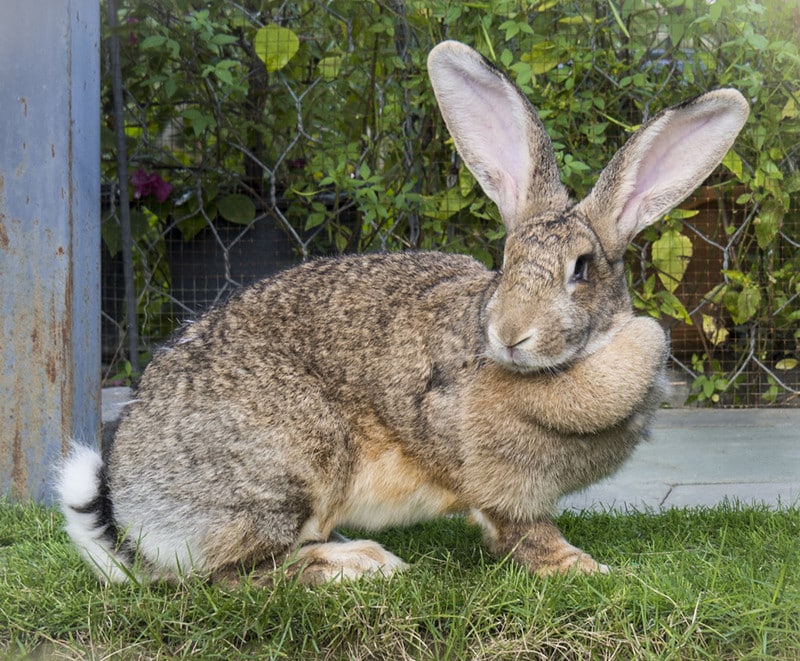
| Weight: | 15 to 22 pounds |
| Life Expectancy: | 8 to 10 years |
As the largest rabbit breed in the world, the Flemish Giant regularly tops 20 pounds. Bigger rabbits aren’t unheard of, however. In fact, the largest Flemish Giant on record weighed 55 pounds! The Flemish Giant is believed to be the Belgian descendant of the now-extinct Patagonian giant rabbit. They have short fur that’s easy to maintain, and their breed standard now includes seven coat colors, although their original agouti color is still the most popular. Despite their large size, the Flemish Giant is usually a docile creature that is patient with children.
2. French Lop
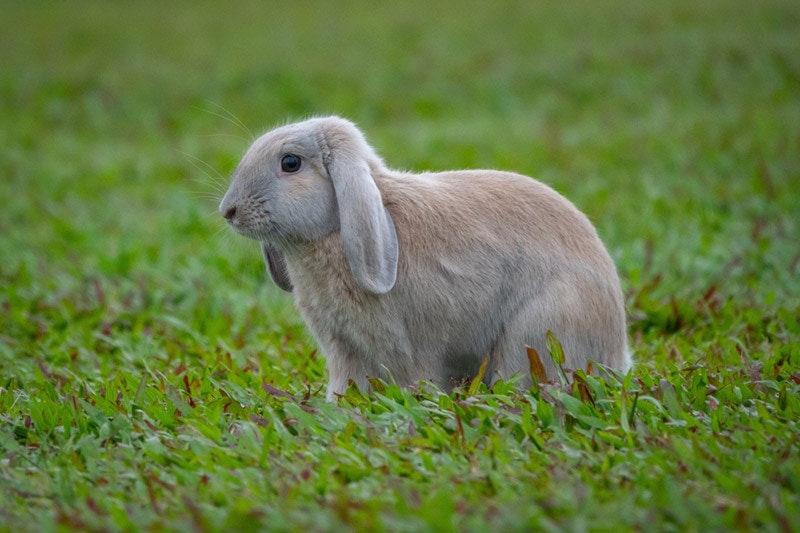
| Weight: | 10 to 15 pounds |
| Life Expectancy: | 6 to 8 years |
Not to be confused with the small Holland Lop, the French Lop is a large breed that weighs 10 pounds or more. Their gently drooping ears and soft, velvety fur endear them to people who love the lop type of rabbit on a grander scale. Their large size made them a profitable investment for the meat market in 1850s France when they were first developed. Today, they’re raised as gentle pets. Their coat comes in a variety of colors and patterns, including Siamese.
3. Continental Giant
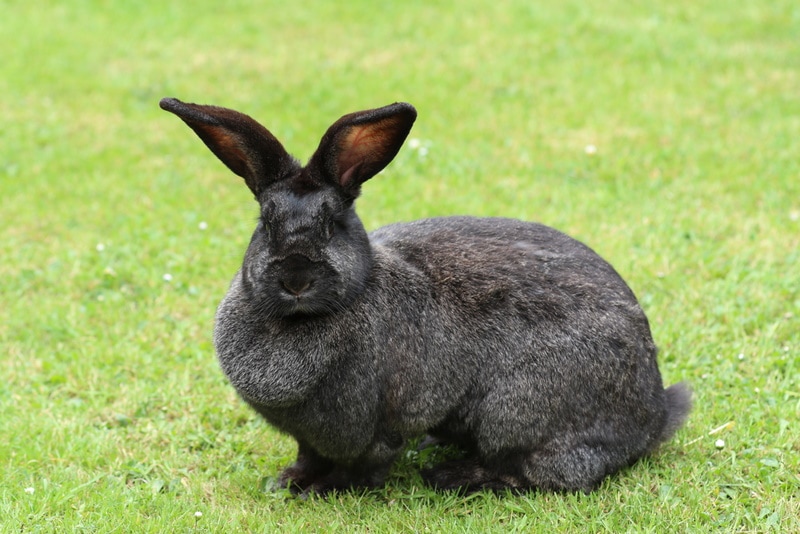
| Weight: | 16 to 20 pounds |
| Life Expectancy: | 5 years |
The Conti rabbit likely descended from the Flemish Giant. They aren’t recognized as a breed by the American Rabbit Breeders Association. Despite this, they’ve still managed to garner the accolades through Darius, the world’s longest rabbit. Darius measured 4 feet 3 inches long in 2010 when he earned the Guinness title. The Conti is a friendly breed that’s more energetic than the laid-back Flemish Giant. They generally enjoy human companionship but do not like being carried. They might kick if you hold them against their will.
4. Blanc de Bouscat

| Weight: | 13 pounds or more |
| Life Expectancy: | 8 to 10 years |
With a pure white coat and red eyes, the Blanc de Bouscat is a docile breed with a unique appearance. Even though they’re rather large compared to the size of most breeds, the Blanc de Bouscat’s relaxed personality allows them to live indoors in small spaces as long as they receive plenty of daily exercise outside of their enclosure. They’re popular in their native France but remain relatively rare outside of the country.
5. Spanish Giant
| Weight: | 15 pounds |
| Life Expectancy: | 4 to 6 years |
As a crossbreed of the Flemish Giant, it shouldn’t surprise you that this Spanish rabbit is one of the largest rabbit breeds in the world. Their gentle personality makes them a great choice as a pet. However, they were raised almost exclusively for meat production until recently, which is why they nearly went extinct around the turn of the century. The Spanish government put programs in place to save the breed, and their numbers are steadily rising today. Sadly, their life expectancy is much shorter than many rabbit breeds.
6. Hungarian Giant
| Weight: | 11 to 15 pounds |
| Life Expectancy: | 8 to 12 years |
Two hundred years ago when the Hungarian Giant was first developed, rabbit breeding was focused on producing meat and pelts instead of pets. Today, we’re thankful that breeding efforts resulted in this cute rabbit with soft, short fur and an amiable personality. The Hungarian Giant was once known as the Hungarian Agouti, which means “red-rumped.” However, further breeding efforts produced multiple colors, so their name changed to become more color inclusive.
7. British Giant
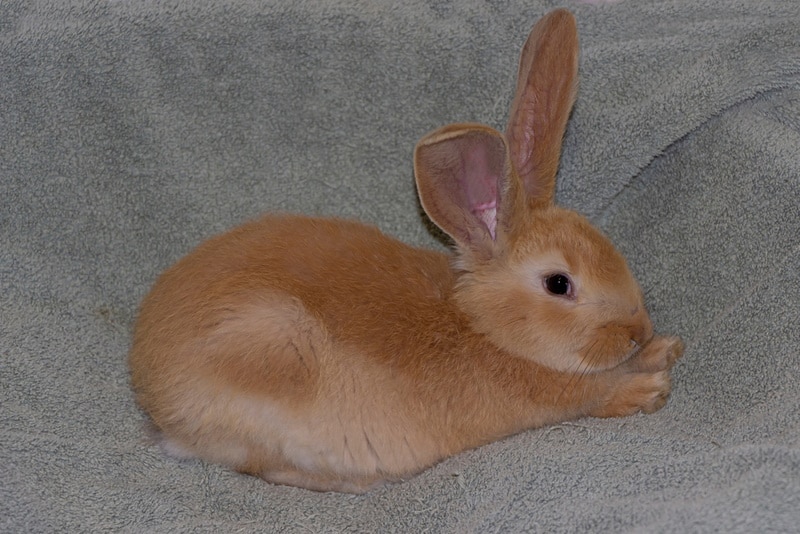
| Weight: | 12 to 15 pounds |
| Life Expectancy: | 4 to 6 years |
The British Giant closely resembles their ancestor, the Flemish Giant. The greatest difference lies in their smaller size and greater range of colors. Although they’re popular in the United Kingdom, they’re rarely seen outside of their native area.
8. Checkered Giant
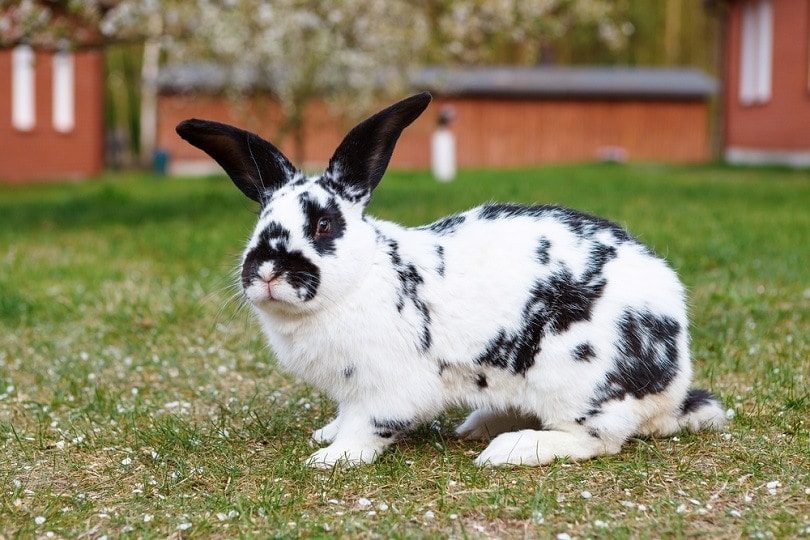
| Weight: | 12 pounds |
| Life Expectancy: | 5 to 6 years |
With white bodies speckled with black, the Checkered Giant rabbit is a cute crossbreed between the Flemish Giant, French Lop, and spotted rabbits. They inherited their gentle nature from the Flemish Giant but have higher activity levels due to the other breeds in their heritage. The Checkered Giant remains a relatively rare breed outside of Europe.
9. Silver Fox
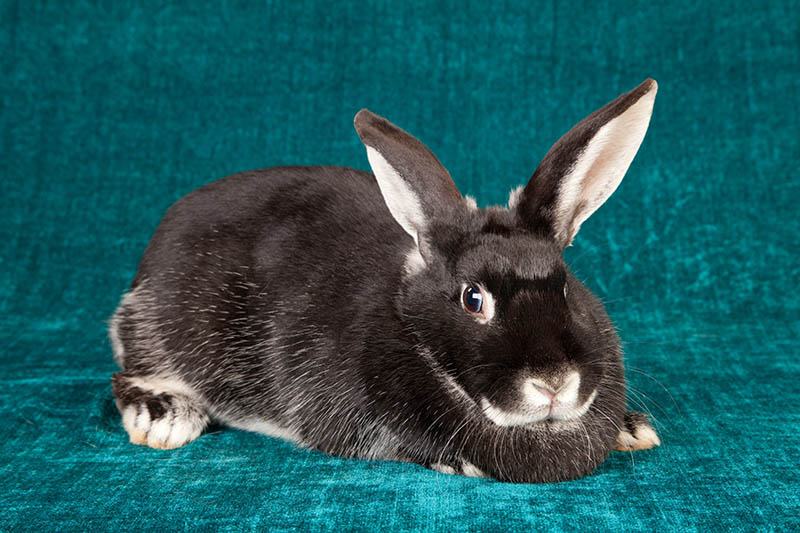
| Weight: | 9 to 12 pounds |
| Life Expectancy: | 5 to 7 years |
True to their name, the Silver Fox commonly features a blue coat color that’s relatively rare in rabbits. Ironically, though, black is the only coat color recognized by the American Rabbit Breeders Association. While their ancestry isn’t known for certain, it’s believed that the Checkered Giant and Champagne breeds played a part. The Silver Fox displays high energy levels and is very friendly, which makes it a great pet for people who love to spend time outside. Like many types of rabbits, the Silver Fox was initially bred for meat and suffered from severe population decline. However, their numbers seem to be rising now as more people are breeding them to keep as pets.
10. Giant Chinchilla Rabbit

| Weight: | 16 pounds |
| Life Expectancy: | 5 to 8 years |
Is it a chinchilla or a rabbit? The Giant Chinchilla Rabbit is a large version of the standard-sized Chinchilla Rabbit. They are not actually chinchillas—which is a separate species from rabbits and cannot interbreed with them—but their resemblance to these rodents earned their name. The Giant Chinchilla Rabbit has an easygoing temperament that’s relatively low maintenance. However, their thick, plushy coat makes up the difference. These guys need to be brushed at least twice a week throughout most of the year. During the molting season, they may need grooming three times a week.
11. Giant Angora
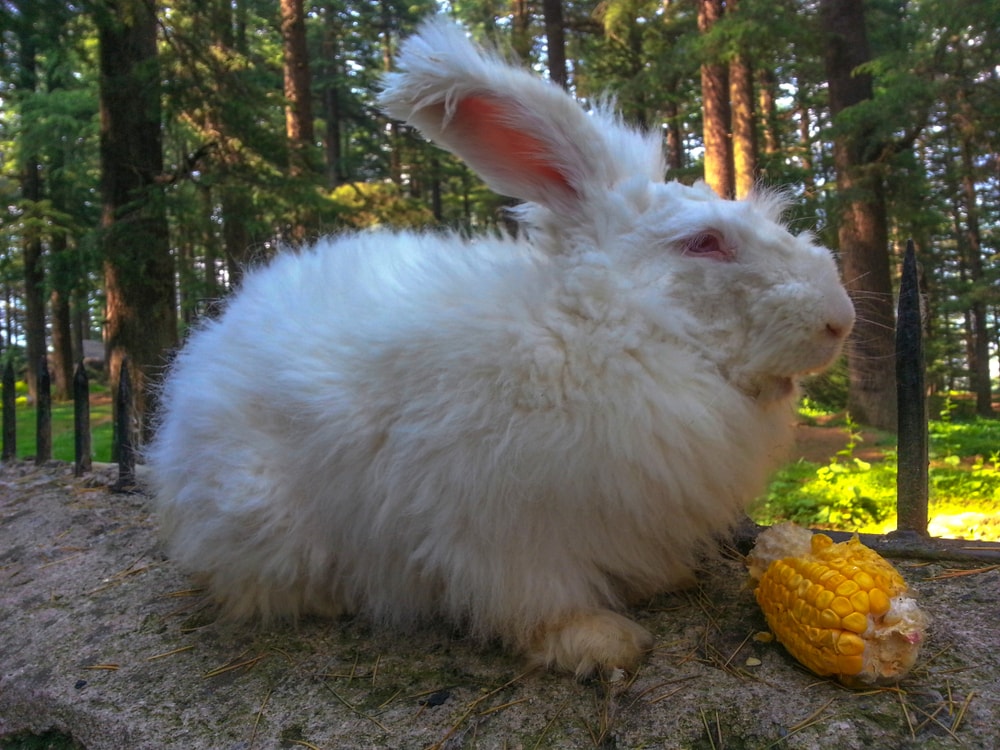
| Weight: | 9 to 12 pounds |
| Life Expectancy: | 7 to 11 years |
A huge rabbit characterized by white fur and feathery ears, the Giant Angora was created by crossing the standard Angora with the Flemish Giant and the English Lop. While most rabbits were raised for their meat and pelts during the 1800s, the Giant Angora was developed for wool production. Even if you intend to raise the Giant Angora purely as a pet, you’ll still need to harvest their wool every 3–4 months to avoid matting and hairballs. Their gentle personalities make them an excellent choice as a family pet.
Conclusion
Most large rabbit breeds were derived from the Flemish Giant. However, their rich breeding history has resulted in a wider variety of colors, sizes, and temperaments than the original parent breeds allowed on their own.
Today, if you decide you want a giant rabbit breed, you can choose a breed based on personality, not just size alone. For example, both the Flemish Giant and the Continental Giant are similarly sized, but the latter is much more energetic. Ultimately, the right breed for you depends on your personal preferences and the time you have to devote to owning a pet.
Featured Image Credit to: mattyw1991, Shutterstock

